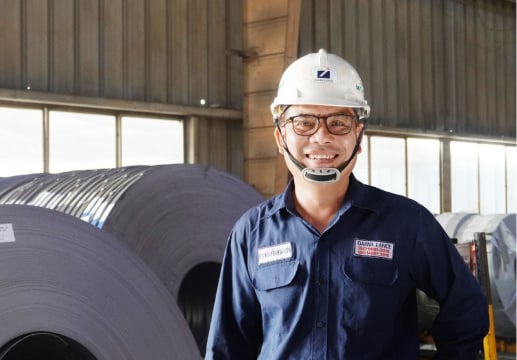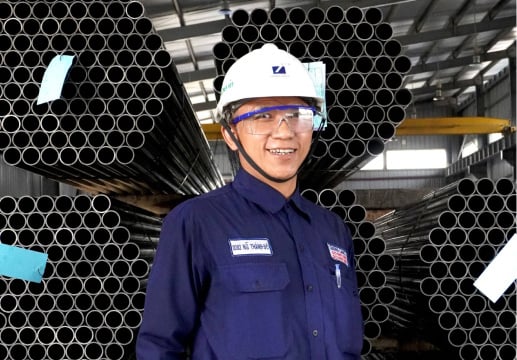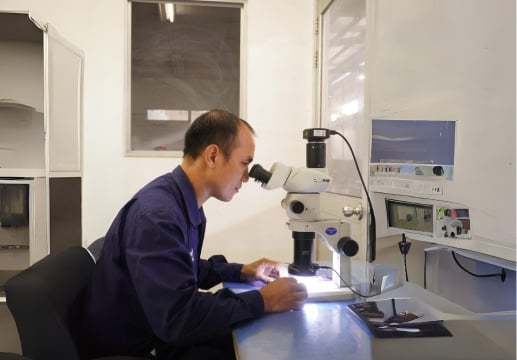Steps in the Production of Silicon Metal
To truly understand the remarkable qualities of Aluminum Lance Pipe, let us walk you through the essential steps involved in producing silicon metal.

![]()
(Illustrations of the Silicon Metal and a Glimpse into the Production Plant)
Raw Material Selection
The first stage in the silicon metal production involves the extraction of raw materials, usually quartz, which is then crushed and heated to produce silicon dioxide (SiO2). This silicon dioxide (SiO2) is then mixed with carbon and heated in a submerged EAF, resulting in the production of silicon metal.
Reduction
Once the silicon metal is obtained, it undergoes a refining process to remove impurities and further enhance its purity. This refining process involves the use of high temperatures and blowing gases to achieve the desired outcome. This is where the Aluminum Lance Pipe plays a crucial role.
Purification
Following the reduction process, it is possible for the silicon obtained to still contain small amounts of impurities. To address this, various purification techniques are utilized, including zone refining, chemical vapor deposition (CVD), and the Siemens process. These methods effectively eliminate impurities and enhance the overall purity of the silicon metal.
Crystallization
The purified silicon is melted and then carefully crystallized to form large, uniform crystals. These crystals contribute to the excellent electrical properties of high-grade silicon.
Doping
Doping refers to the intentional introduction of impurities into a semiconductor crystal in order to precisely modify its conductivity. For specific applications, controlled amounts of dopants are introduced to modify silicon's electrical properties. This step is crucial for creating semiconductors used in electronics.
RELATED POST
What is Aluminum Lance Pipe?
Aluminum Lance Pipe is a specialized type of oxygen lance pipe with or without a thick layer of refractory ceramic coatings used in the production of silicon metal, which is a key raw material in solar panel and semiconductor production.
Aluminum Lance Pipe is employed to introduce oxygen into the submerged electric arc furnace (Submerged EAF), regulating flow temperature and reducing iron content. This precise manipulation of conditions ensures the attainment of specific silicon quantities, facilitating the production of both high-grade and low-grade silicon metal.
![]()
(Aluminum Lance Pipe used in Submerged EAF for Silicon Metal Production)
When is Aluminum Lance Pipe Used in Silicon Metal Production?
Aluminum Lance Pipe is highly preferred to be used when producing high-purity silicon metal where oxygen lance pipes that contain a significant amount of iron are not effective.
When producing silicon metal, heat-resistant materials are used to inject oxygen into the submerged electric arc furnace (Submerged EAF). During this process, a chemical reaction occurs between the heat-resistant materials and the molten silicon content within the furnace, resulting in the creation of various impurities that impact the purification process to produce the final product, silicon metal. Typically, the task of injecting oxygen into Submerged EAF is carried out using an oxygen lance pipe. However, the presence of iron content in the oxygen lance pipe can lead to a high catalytic potential, causing a reaction with silicon oxide. To overcome this challenge, the use of an aluminum lance pipe as a substitute heat-resistant material is a smart solution. It helps in adjusting the oxygen quantity and temperature to provide a highly effective and logical approach for producing high grade silicon metal.
Types of Aluminum Lance Pipe in Daiwa Lance
In Daiwa Lance, to cater to specific usage requirements, we offer customers two options with Aluminum Lance Pipe products. The lineup includes Aluminum Lance Pipes with ceramic coatings as well as those without, providing flexibility and versatility for various applications.

(A sample of Aluminum Lance Pipe without ceramic coatings)
Silicon metal is manufactured within Submerged EAF at a temperature of around 2000°C. The melting point of aluminum is 660°C, while iron's melting point is 1,538°C, and ceramic's melting point is 2,000°C. Therefore, the use of an Aluminum Lance Pipe coated with refractory ceramic layers will provide enhanced effectiveness in withstanding high temperatures within Submerged EAF. Furthermore, with the current technology at Daiwa Lance, we have applied two layers of ceramic coatings to ensure heat-resistant thickness without adding unnecessary weight to the Aluminum Lance Pipe materials, thus reducing the burden on operators during the operation.

(A sample of Aluminum Lance Pipe with ceramic coatings with higher heat resistance)
Conclusion
In conclusion, the use of Aluminum Lance Pipe in the production of silicon metal is a crucial step that guarantees the production of high-grade pure silicon. By introducing oxygen into Submerged EAF, Aluminum Lance Pipe helps regulate temperature flow and reduce iron content, ensuring the attainment of specific silicon quantities.
To learn more about the available sizes, types of connections, and advantages of Daiwa Aluminum Lance Pipe over ordinary ones, be sure to follow our next blog post. We will provide detailed information and insights into the exceptional features of Daiwa Aluminum Lance Pipe, further highlighting its importance in the production of high-grade silicon metal.
- Category:
- Daiwa Lance Products





















